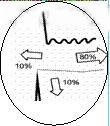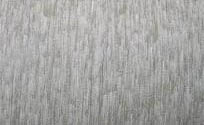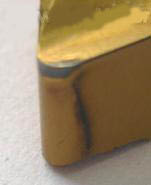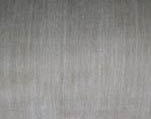| Keywords: | |
| Resin-based glass fiber composites have excellent properties such as high specific strength and specific stiffness, good fatigue resistance, and unique designability. They have been widely used in aerospace, defense, military and civil applications. 1. Cutting characteristics of resin-based glass fiber composites    The resin-based glass fiber composite material is composed of a hard glass fiber and a soft resin matrix. The resin-based glass fiber composite material is wound and formed, and the glass fiber content is about 80%. The strength and hardness of the material are greater than 45# steel. And 40Cr steel, and the density is only about 2.2g / cm.    In the cutting process of resin-based glass fiber composites, the factors affecting tool life are the same as those of metal materials, mainly cutting heat, friction and cutting edge pressure, while hard particle fiber in resin-based glass fiber composites, Similar to the abrasive in the grinding wheel, the tool is ground to accelerate the tool wear and deteriorate the cutting conditions.
Figure 1: Heat distribution during metal cutting 2. Selection and use of resin-based glass fiber composite cutting tools A glass fiber wound tubular part has a length of 1300mm and an outer circle of Ф130mm. In order to meet the requirements of other parts, it is necessary to cut the outer circle. Due to the special requirements of the part, the coolant cannot be used in the cutting process. Cutting is difficult. 2.1 The use of cemented carbide tools According to the characteristics of the part, we initially selected the indexable carbide tool, mainly considering the heat resistance and wear resistance. The selected tool is an equilateral unequal hexagon with a cutting angle of 80°. , 0° back angle, 6° rake angle, single-sided C-shaped chipbreaker, model WNUM130716RC5 insert, material YT758, this tool is characterized by good heat resistance and oxidation resistance, high temperature hardness, wear resistance Good, suitable for processing parts with high hardness materials. When the outer circumference of the glass fiber composite part is cut by the blade, the tool wears severely and the outer surface of the part is rough and has tear marks. During the cutting process, the cutter head must be removed to continue the cutting. The tool can only be turned by one knife at a time, so that each part needs to be sharpened and kniveted 2~3 times. If the cutter is not sharp, the cutting is performed. It will cause tear marks on the outer surface of the workpiece (see Figure 2), and even cause excessive heat to burn the workpiece, causing the workpiece to be scrapped. According to this situation, it is divided into coarse and fine two-time machining during cutting, which are respectively processed by two rough and fine knives. The cutting parameters are cut depth ap=0.8mm, Vc= during roughing. 130m/min, f=0.61mm/r, fast removal allowance; cutting parameters in finishing process using cutting depth ap=0.3mm, Vc=130m/min, f=0.3mm/r, 150# after finishing The abrasive cloth is polished to size. With this kind of cutting tool, the production efficiency is low, and 7 to 8 pieces per shift are processed. The operator has high labor intensity, high requirements on the operator, and the quality is also unstable, which cannot meet the mass production requirements of the product. Figure 2 Photo of the cutting tear 2.2 Trial of coated tools In view of the above situation, after understanding and comparison, we selected the blade of the equilateral triangle with a blade angle of 60°, the back angle of 0°, and the cutter model TNMX 160408-WM, which is made of GC4015. The tool surface is a golden yellow TiN coated cemented carbide, which can reduce the friction coefficient of the blade surface and increase the wear resistance of the tool. When machining with the same cutting parameters, the blade coating was found to be severely worn after machining (see Figure 3). The parts were rough and had tear marks. Obviously, this tool could not meet the cutting of resin-based glass fiber composites. Claim.
Figure 3: Blade coating wear photo 2.3 The selection of efficient tools 2.3.1 Using high hardness tools Tests have shown that when processing resin-based glass fiber composites with high-speed tool steel and ordinary cemented carbide tools, the tool wear is extremely serious and the processing efficiency is low, so it is necessary to use a tool with higher hardness. Polycrystalline diamond (PCD) is a polycrystalline material obtained by polymerizing a layer of artificial diamond micropowder with a solvent and a catalyst under high temperature and high pressure. The tip-cutting blade with cemented carbide as the base has good impact resistance, flexural strength and vibration resistance. Compared with cemented carbide, its hardness is 3-4 times higher, wear resistance and life is improved by more than 100 times. At the same time, the cutting edge of the tool is very sharp and the friction coefficient is small, which is suitable for the processing of non-ferrous metals and non-metallic materials. Combining the above characteristics, we selected the polycrystalline diamond blade made by Sandvik with an equilateral triangle with a blade angle of 60°, a 7° relief angle, a tool type of TCMW 16T308-FP and a material of CD10. 2.3.2 Selection of cutting process parameters Polycrystalline diamond inserts are a new type of highly efficient tool. The recommended cutting parameters for non-ferrous metals are listed in the Recommended Parameters Manual. For the cutting of resin-based fiberglass composites, it is not mentioned in the manual, nor is there any other cutting manuals. Involving the cutting parameters of such materials, so in the actual machining process, we carried out a series of process tests based on the machining experience, combined with the cutting parameters of cemented carbide, and finally determined a specific method for the characteristics of such parts and materials. The process parameters are depth of cut ap=1.1mm, Vc=110~130m/min, f=0.25~0.35mm/r. The cutting allowance is removed once and the cutting is reduced once. After many cutting tests, the tool is very stable, and the average tool tip can process 150 parts. The continuous processing of 150 parts has no sharpening, the tool tip is slightly worn, and the surface finish of the machined parts is good (Figure 4). The finished part finish can be achieved without polishing with abrasive cloth, which greatly reduces the labor intensity of the operator. At the same time, the auxiliary time such as sharpening tool and polishing is greatly reduced, and the processing cost is reduced. With this tool, 20 parts can be machined per shift, the production efficiency is more than doubled, the quality of the processed parts is greatly improved, and the cutting process is stabilized. Figure 4 Diamond tool cutting good finish photo 3. Conclusion In the cutting process of resin-based glass fiber composites, the use of polycrystalline diamond blades and processing according to reasonable cutting process parameters can stabilize the cutting process of resin-based glass fiber composite materials, improve processing efficiency, reduce processing costs, and improve The processing quality of the part. | |
Women Nightwear
We are a professional supplier of women's nightwear, we have nightdress, robe, women top and shorts, etc. Our product are made of comfortable and high quality material, they are breathable and eco-friendly. We have a well trained team to control the product style, quality, customer service and shipment delivery.Women Nightwear
Ladies Nightwear,Pajamas For Women,Womens Nightwear,Silk Robe
Guangzhou Jiamanqi Apparel Co.,Ltd. , https://www.pretibisous.com




